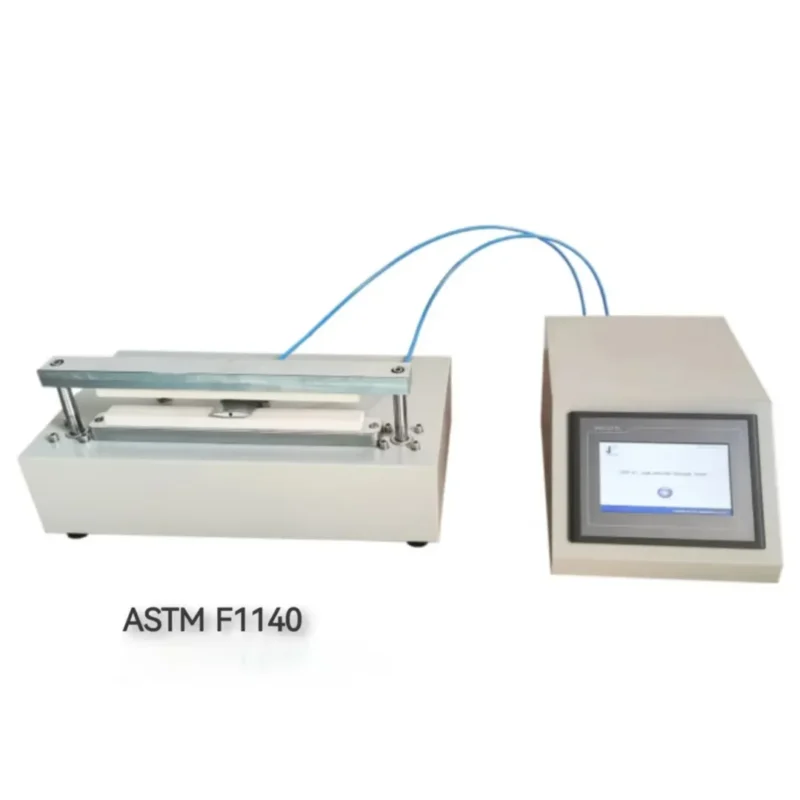Mastering Burst or Creep Testing
Introduction: Why Burst or Creep Testing Matters in Flexible Packaging
Flexible packaging plays a pivotal role in safeguarding products throughout the supply chain, especially in the food, pharmaceutical, and medical industries. To ensure these packages remain secure and uncontaminated, burst or creep testing is essential. These tests verify the structural integrity and seal strength of packaging under stress, simulating real-world conditions. Compliance with standards like Norma ASTM F1140 ensures that manufacturers meet regulatory expectations while guaranteeing product quality. In this article, we’ll walk through the principles, procedures, and instrumentation—like Cell Instruments’ LSST-01 Testador de resistência a vazamentos e selagem—that make these tests reliable and repeatable.
Understanding the Burst Leak Test and Seal Burst Strength Test of Flexible Food Packages
O burst leak test is a non-destructive method used to evaluate the overall strength of a sealed package. It involves gradually increasing internal air pressure until the package fails. The peak pressure is recorded and used as a benchmark for product consistency and safety assurance.
O seal burst strength test of flexible food packages, outlined in Norma ASTM F1140, specifically targets the strength of package seals. This ensures that under normal or elevated pressures, seals won’t compromise the product’s sterility or freshness. Properly conducted, this test helps identify weak seals, process deviations, or packaging material defects.
These tests are especially critical in food applications, where gas exchange, microbial barrier function, and shelf life depend heavily on seal performance.
ASTM F1140 Testing Methods: Burst, Creep, and Creep-to-Failure
ASTM F1140 provides a standardized framework for evaluating package seal strength using three main approaches:
-
Burst Testing
-
The package is pressurized internally until it ruptures.
-
The highest pressure reached before rupture is recorded as the burst pressure.
-
This data serves as the reference point for other test types and provides insights into package design limitations.
-
-
Teste de fluência
-
The package is held at a constant pressure, typically 80% of the burst pressure.
-
The goal is to observe deformation over time, helping identify material fatigue or inconsistencies in seal formation.
-
-
Teste de fluência até a falha
-
Pressure is maintained at 90% of burst pressure until the seal or structure fails.
-
It simulates long-term stress conditions to evaluate durability beyond standard use cycles.
-
By conducting these methods, quality control professionals can ensure packaging meets both functional and regulatory standards.
Recommended Instrumentation: LSST-01 Leak and Seal Strength Tester
For accurate, repeatable, and compliant testing, selecting a reliable instrument is crucial. Cell Instruments’ LSST-01 Leak and Seal Strength Tester is specifically designed for applications requiring precision pressure control and automated data acquisition. It supports:
-
Burst or creep testing in compliance with Norma ASTM F1140
-
Adjustable test parameters for flexible application across packaging types
-
Digital pressure monitoring and automatic pressure ramp control
-
Data logging for traceability and quality assurance documentation
O LSST-01 is ideal for QA labs, packaging R&D, and production line validation, making it a powerful asset for manufacturers focused on packaging integrity and regulatory compliance.
Best Practices for Conducting Burst or Creep Testing
To ensure accuracy and consistency in burst or creep testing, follow these tips:
-
Condition your samples to standard environmental parameters before testing.
-
Use calibrated equipment to ensure data reliability.
-
Avoid over-tightening fixtures that may introduce bias or damage samples.
-
Analyze burst patterns to determine if failures result from material fatigue, seal defects, or structural design.
-
Conduct statistical analysis on test results to assess production batch consistency.
Adhering to recognized standards like Norma ASTM F1140 and using robust testing methods such as burst leak test e seal burst strength test of flexible food packages is essential for packaging reliability. Whether your goal is regulatory compliance, product protection, or consumer satisfaction, burst or creep testing provides critical insight into packaging performance.
Cell Instruments’ LSST-01 Leak and Seal Strength Tester is a proven solution that supports flexible, repeatable, and standards-based testing across industries. As packaging demands increase, ensuring seal integrity will remain a cornerstone of quality control.

